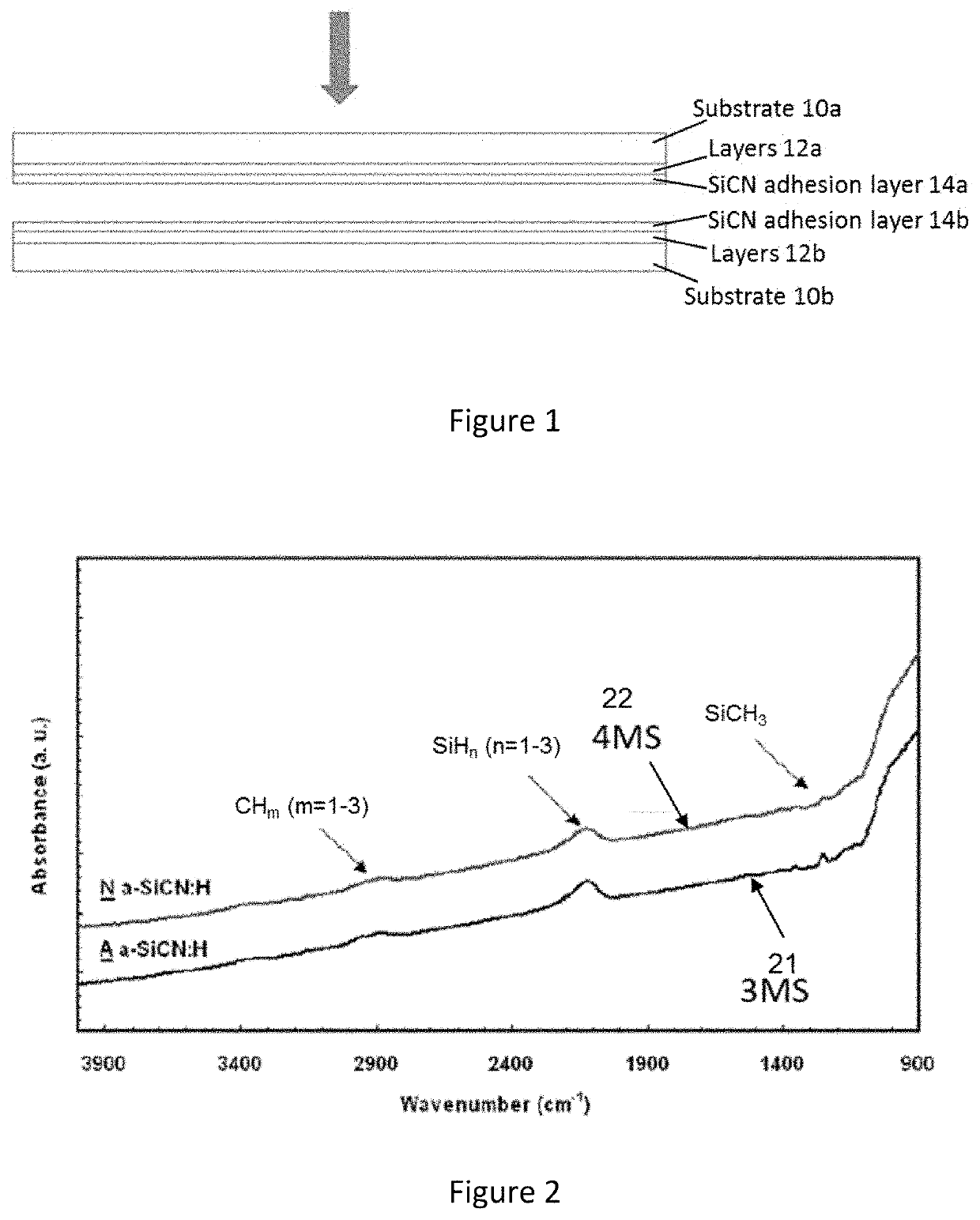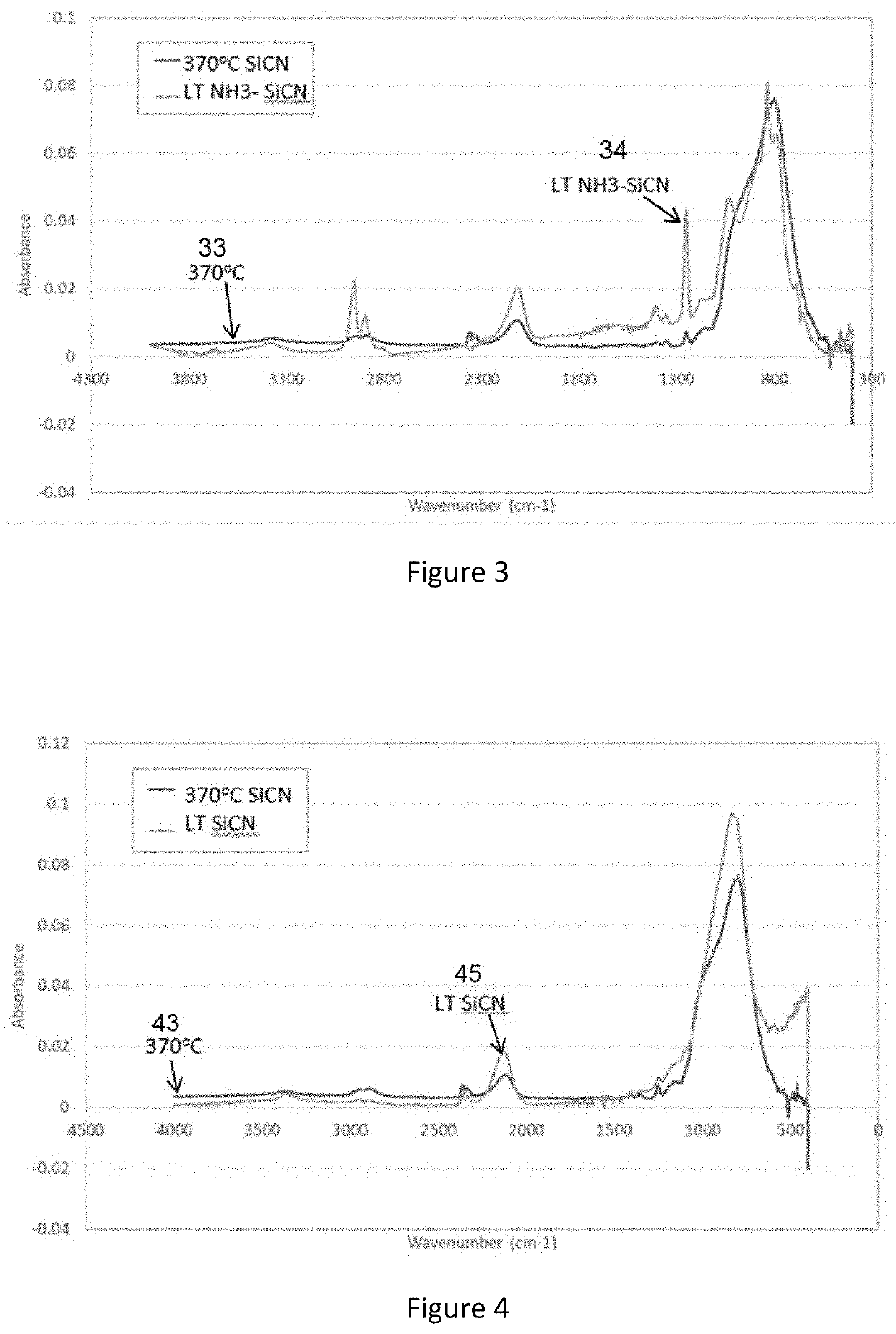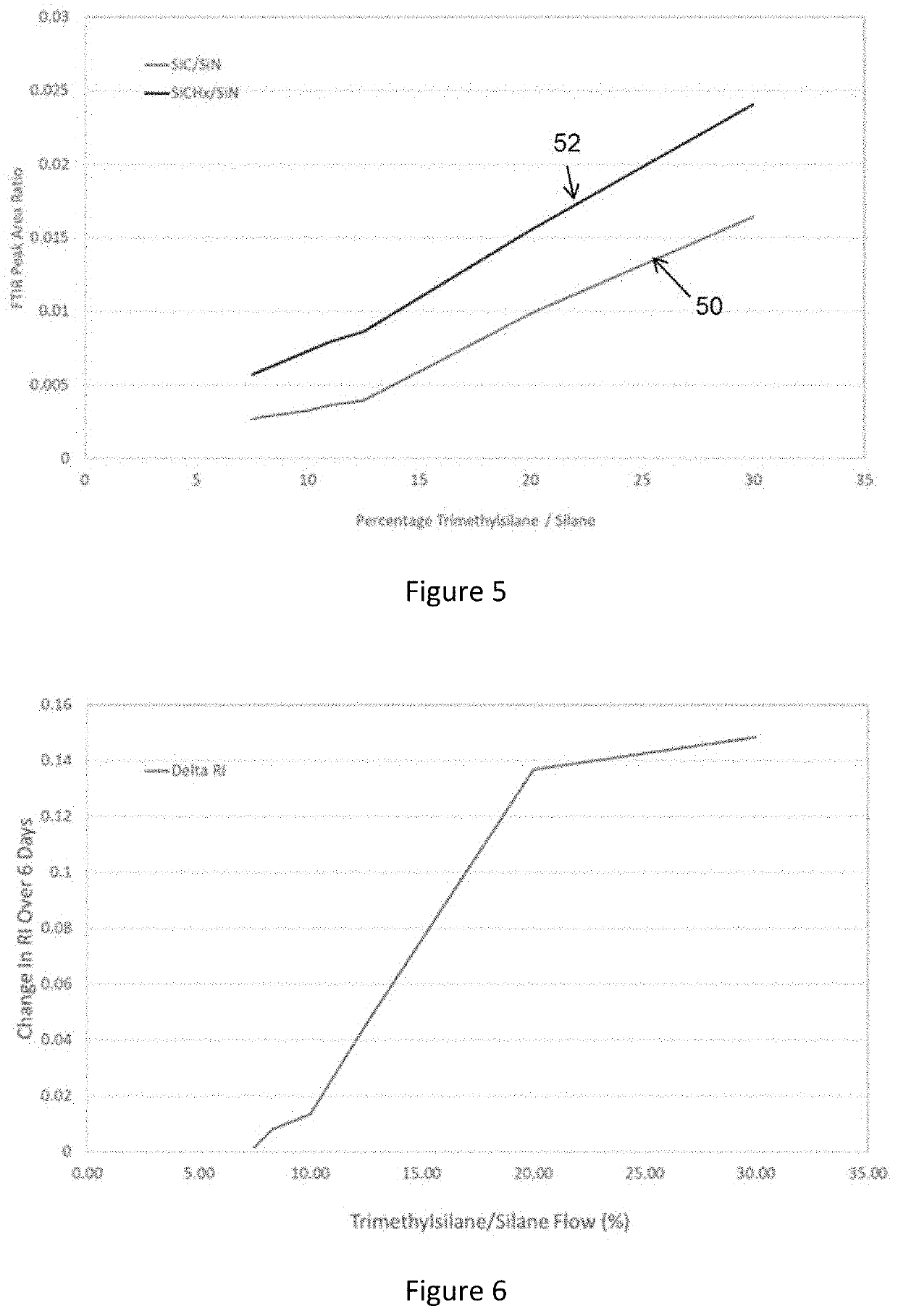Method of Deposition
a silicon carbon nitride and film technology, applied in chemical vapor deposition coatings, electrical equipment, coatings, etc., can solve the problems of poor bonding strength of adhesion layers, poor known processes that are not suitable for bonding substrates, etc., to achieve good copper barrier layer properties, low thermal budget to the substrate, and low thermal budget constraints
- Summary
- Abstract
- Description
- Claims
- Application Information
AI Technical Summary
Benefits of technology
Problems solved by technology
Method used
Image
Examples
example 5
[0069]In one exemplary embodiment (Example 5), a SiCN:H film was deposited onto a 300 mm silicon wafer at 175° C. by PECVD. The reactive precursors were silane (SiH4), trimethylsilane (3MS) as the carbon-donating precursor, and nitrogen gas (N2).
[0070]Using the combination of a (non-carbon containing) silane, and a discrete carbon-containing precursor allows the carbon content of the SiCN:H films to be fine-tuned and varied in a controlled manner. This can also be more cost-effective than using a single organosilane precursor. The chamber pressure was in the range of 1-5 Torr. The plasma was sustained using a mixed frequency RF power. The mixed frequency RF power comprised a high frequency RF (operating at 13.56 Hz) and a low frequency RF (operating at 380 kHz).
[0071]FIG. 4 shows an FTIR spectrum of the as deposited SiCN:H film using the method of Example 5 (line 45). Line 43 (FIG. 4) corresponds to a SiCN:H film deposited at 370° C. using the same conditions as those used in compar...
PUM
| Property | Measurement | Unit |
|---|---|---|
| temperature | aaaaa | aaaaa |
| temperature | aaaaa | aaaaa |
| pressure | aaaaa | aaaaa |
Abstract
Description
Claims
Application Information
 Login to View More
Login to View More - R&D
- Intellectual Property
- Life Sciences
- Materials
- Tech Scout
- Unparalleled Data Quality
- Higher Quality Content
- 60% Fewer Hallucinations
Browse by: Latest US Patents, China's latest patents, Technical Efficacy Thesaurus, Application Domain, Technology Topic, Popular Technical Reports.
© 2025 PatSnap. All rights reserved.Legal|Privacy policy|Modern Slavery Act Transparency Statement|Sitemap|About US| Contact US: help@patsnap.com



